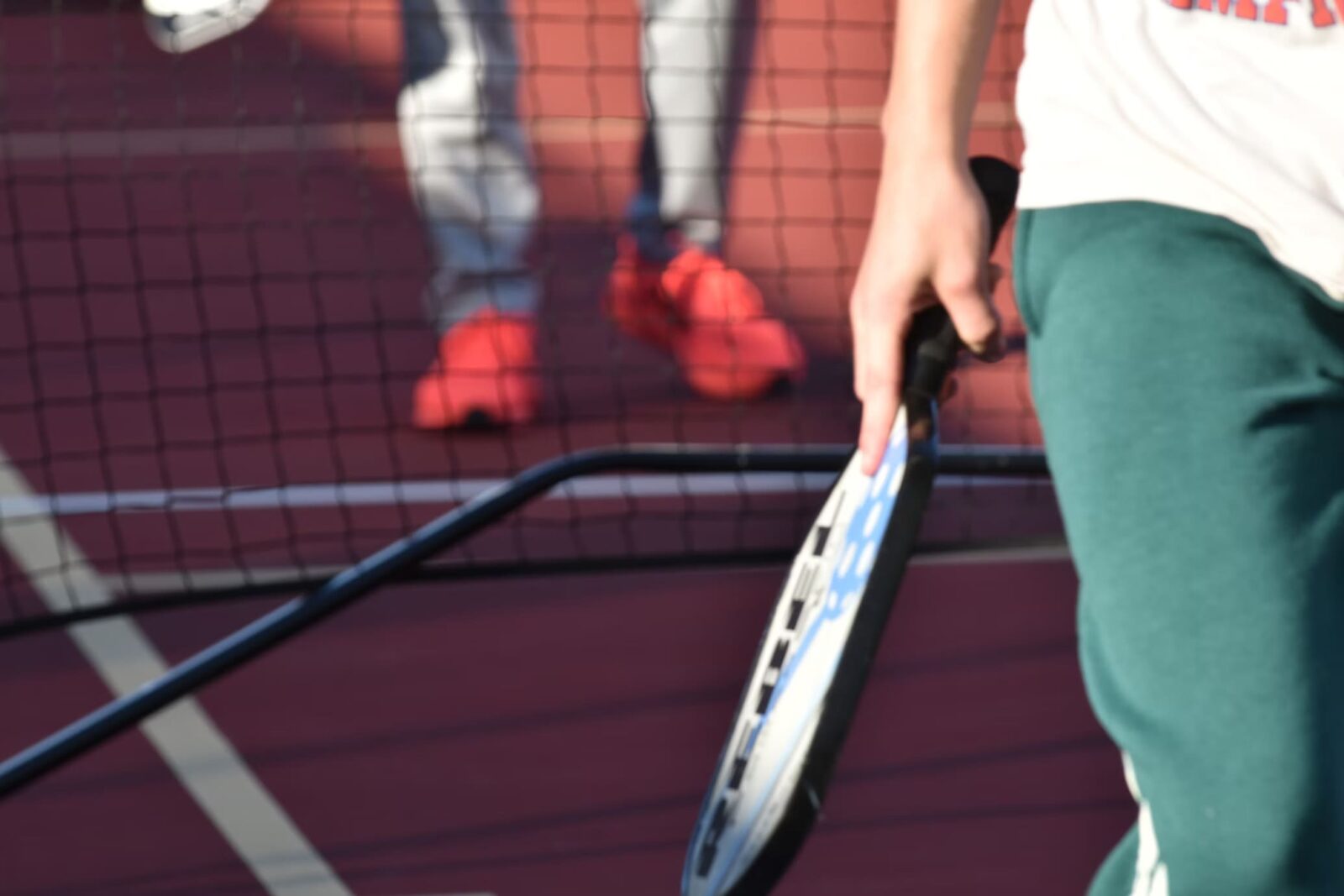Pickleball is a rapidly growing sport that combines elements of tennis, badminton, and ping-pong.
Played on a court slightly smaller than a tennis court with a paddle and plastic whiffle ball, it’s an increasingly popular pastime for people of all ages.
This article aims to give you a comprehensive overview of how to play pickleball, including basic rules, required equipment, and gameplay techniques.
The Basics of Pickleball
Before diving into the ins and outs of playing this exciting game, it’s essential to understand some standard terms and definitions:
- Court: A rectangular surface measuring 44 feet by 20 feet, divided into two equal halves by a net set at a height of 36 inches at the sidelines and 34 inches in the center.
- Paddle: Typically made from lightweight material such as wood, composite or graphite, paddles are used to strike the ball during gameplay.
- Ball: Similar to a whiffle ball, pickleballs have small holes and are made of durable plastic, generally weighing less than an ounce and roughly three inches in diameter.
- Serve: The act of starting a point by hitting the ball into the opponent’s court, following specific rules.
- Rally: Continuous back-and-forth action between players after a serve until a point is scored.
Read also : 5 Essential Health Benefits of Pickleball You Need to Know
Pickleball Equipment
To get started with pickleball, you’ll need only a few essential pieces of equipment:
- A paddle for each player. There are many types and styles available, from beginners to advanced players. Choose one that feels comfortable in your hand and suits your playing level.
- A pickleball (or a few if you’re prone to losing them). There are different options available, with indoor and outdoor-specific balls being the most common choices.
- Comfortable athletic clothing and shoes suitable for court sports like tennis or badminton.
- An appropriate playing surface, such as a public pickleball court or a tennis court that’s been converted using portable lines and nets. Alternatively, you can purchase a portable net system for personal use if you have a large enough flat space at home.
The Rules of the Game
Once you’ve got the basic equipment and setup sorted, it’s time to learn the rules of pickleball:
Serving Rules
Each point starts with a serve. In doubles play, one player from each team takes turns serving until their side loses a point. Afterward, the other partner serves until they lose a point, before the opposing team gets their chance. When serving:
- The server must stand behind the baseline on the right-hand side, striking the ball diagonally across the court to land within the opposite service box.
- A foot fault occurs when the server steps on or over the baseline during the serve.
- In recent moments, “drop serve” has gained popularity, wherein a player drops the ball before hitting it while it bounces off the ground. This is now permitted under official rules.
- If the ball hits the net but still lands in the designated service box, this constitutes a “let,” and the server may try again with no penalty.
Scoring and Rotation
In pickleball, points can only be scored by the serving team. When a player wins a point:
- The score is called out as three numbers: server team’s score, the receiving team’s score, and the servers position (either 1 or 2).
- If the player started on the right side of the court, they switch positions with their partner after winning the point, ensuring alternate serves from each side.
- The losing team calls out the updated score before resuming play.
The Two-Bounce Rule and the Non-Volley Zone
There are two essential rules in pickleball that ensure fair gameplay:
- The ball must bounce once in each team’s court zone before any player can volley it (hit it directly out of the air without it bouncing).
- There’s an area near the net known as “The Kitchen” or “Non-Volley Zone” where players may not hit the ball if they are standing within it. A fault is called when this occurs.
Basic Pickleball Techniques and Strategies
As any new player can attest to, there’s more to the game than just understanding the rules. Becoming proficient at pickleball means mastering specific skills and strategies:
Serving and Returning
A good serve sets the tone for the entire rally. Experienced players aim for deep serves, forcing opponents to move back and opening up the front court. Similarly, while returning how you place your shot makes all the difference:
- Mixing up the direction and pace of your return can make it more difficult for opponents to anticipate your next move.
- Aim for softer, shorter returns, drawing the opposing team closer and creating open spaces in their half of the court.
The Third Shot Drop
Commonly considered a crucial skill in pickleball, the third shot drop is the first offensive move executed by the serving team. The objective is to:
- Return the ball softly over the net so that it lands near “The Kitchen,” minimizing chances of an opponent’s volley smash.
- Gain advantage and movement control while giving players time to advance and take control of the Non-Volley Zone.
Volleying and Dinking
A quick exchange at the net is known as “volleying”. While dinking refers to shots made close to the net with little pace, just enough to clear it without popping it up in a vulnerable position for quick returns from the opponent
Both skills require finesse in touch and precision placement for strategic gameplay.
Inspiration for improving your game can be found from various sources, such as watching videos of expert players or even purchasing an e-book focused on advanced play and tactics.
Ultimately, practice and experience will pave the way for success on the court.

